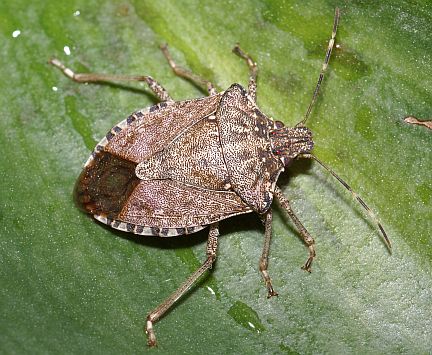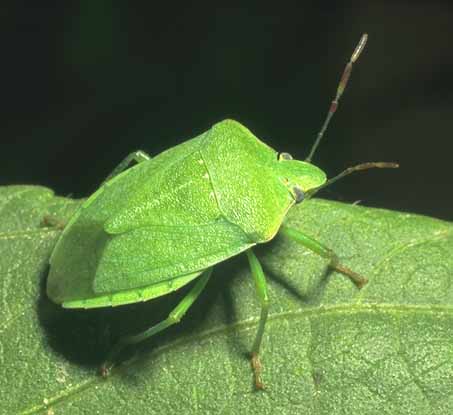What Are Stink Bugs?
Pentatomoidea, commonly known as stink bugs or shield bugs, is referred to a super family of insects belonging to the Heteroptera suborder. In this suborder, the insects share common characteristics such as piercing mouthparts as well as a particular kind of wings, which are toughened at the base and membranous at the tips.
The scientific name of stink bugs, Pentatomoidea, has been derived from the fact that they have an antenna which is divided into five segments. Stink bugs have broad bodies that are either in triangular or semi-elliptical shape. Their bodies serve the purpose of defensive shield against predators; this is why they are sometimes referred to as "shield bugs".
Stink bugs excrete offensive smelling liquid from their thorax glands that are placed in between the first and second pair of legs. When they are molested or attacked by predators, they produce this liquid defensively in order to put off potential threat to their lives. Usually, they are not considered to be pests for they do not render significant loss to plants; however, when they make a larger group, they may become considerable pests.
It is worth mentioning here that all stink bugs have sucking mouthparts and broad bodies, but still there are variations in their body colorings. On account of this distinction they are further divided into fifteen different species. Among them brown stink bugs and green stink bugs are the most famous types.
Brown Stink Bugs

The Brown Marmorated Stink Bugs, scientifically known as Halyomorpha halys, are insects in Pentatomoidea family found in Asian counties like China and Japan. The size of adult brown stink bugs varies from individual to individual ranging from 1.5 cm long to 2 cm. When they are nymphs, they are red in color that becomes black and ultimately brown as soon as they become adults. Although their underside remains white even after reaching adulthood, it is their brown legs with faint white banding that make them distinct from other similar bugs.
The brown marmorated stink bugs are regarded as agricultural pests for they render widespread harm to fruits and vegetable crops. Their major hosts include maple, birch, serviceberry, catalpa, butterfly bush, pecan, redbud, hackberry, pepper, dogwood, citrus, cucumber, tomato, sunflower, apple, pear, plum, and grape. Brown stink bugs use their proboscis to suck the host plants and resultantly they not only create necrotic areas on the surface of fruits but also even cause seed loss and transfer of plant pathogens.
Another distinct characteristic of brown bugs is that they go into the state of hibernation in winter seasons and invade homes or structures where temperature does not fall critically. Their hideouts include under siding, windows and door frames. However, in spring they remain active in feeding on plants and vegetables.
Green Stink Bugs

The green stink bugs, scientifically known as Acrosternum hilare, are the species of stink bugs that belong to Pentatomoidea family. Since it originates from Asian countries particularly Japan and China, they are also called as "Asian Stink Bugs". It is similar to Brown Marmorated Stink Bug in terms of certain characteristics like stink glands, broad bodies and sucking trait. Both green and brown stink bugs are pest species targeting mostly the southern parts of the USA.
However, the difference between green and brown stink bugs is the color variation. As the name itself implies, the green stink bug has bright green color. Their adult bugs have also an orange line that separates their heads from bodies. On the other hand, the nymphs are generally black in color with underdeveloped wings; on reaching adulthood, they also turn green and get defensive shield on their broad bodies.
As far as their host plants are concerned, these include mainly orange trees, cherry trees, soybean, and apple trees. They cause significant damage to gardens and farms for they mostly remain unnoticed by the farmers on account of their green color. Furthermore, they use green plant not only as a food but also as a safe haven during their breeding period. Here they lay eggs on host plants in an excessive number and increase their race.